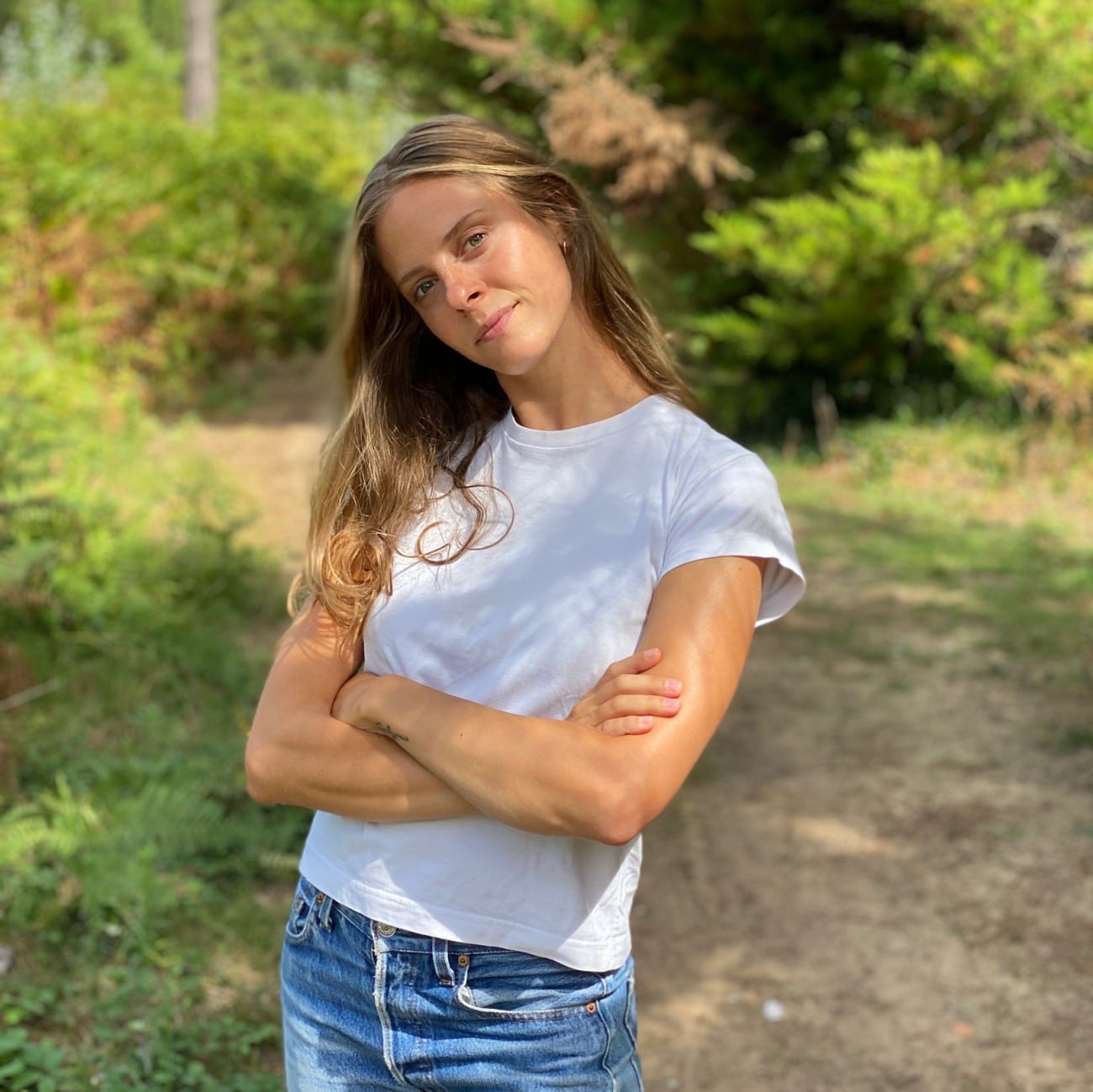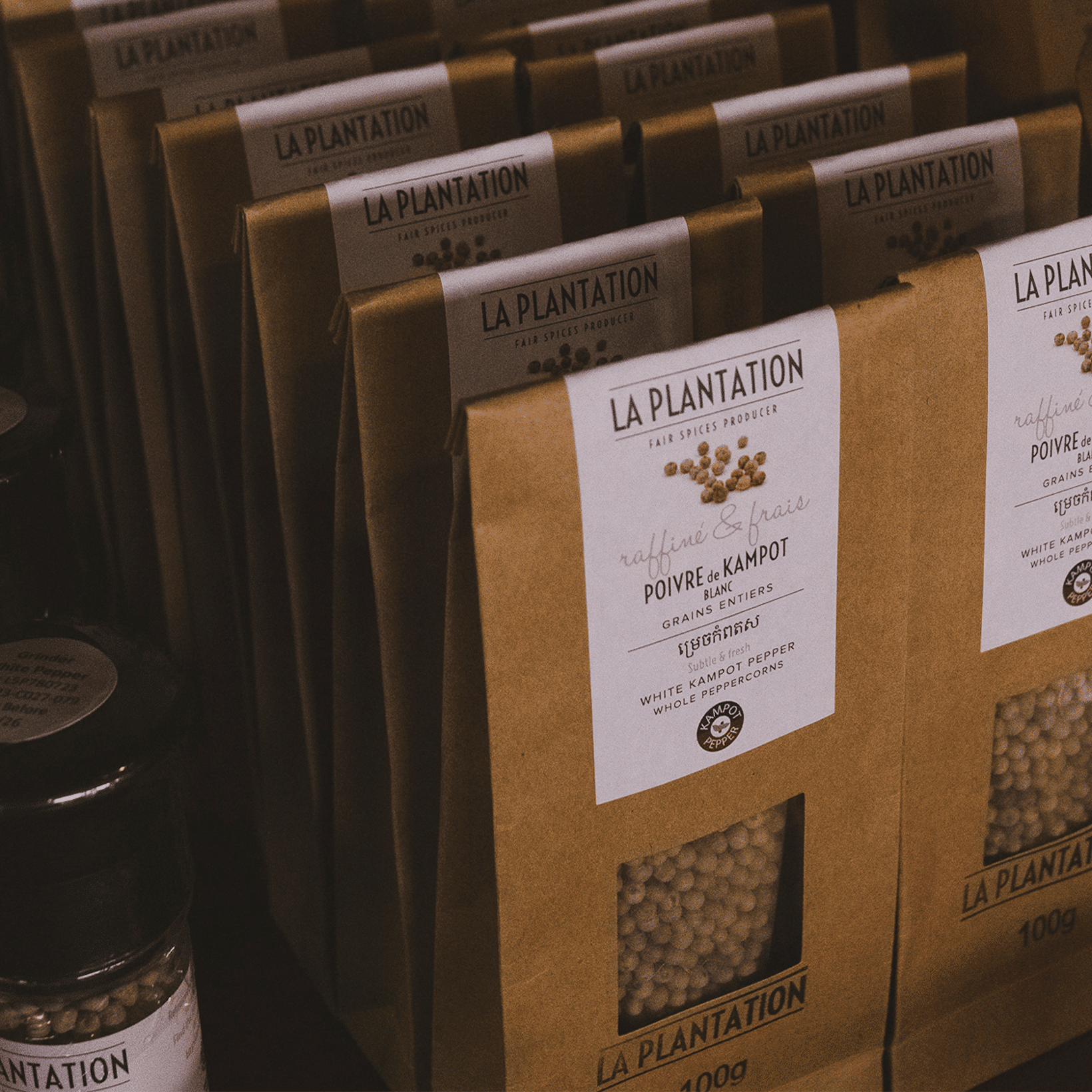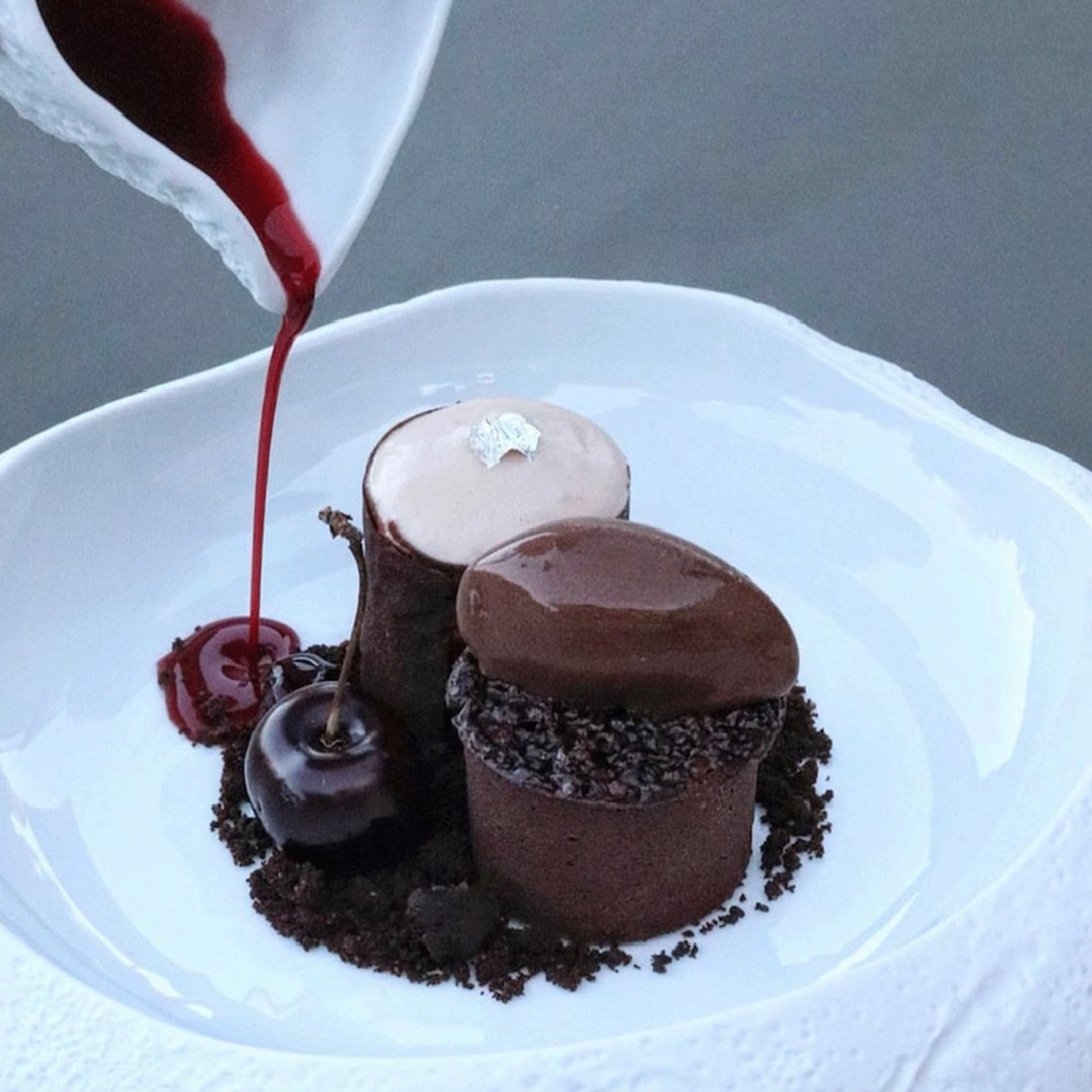
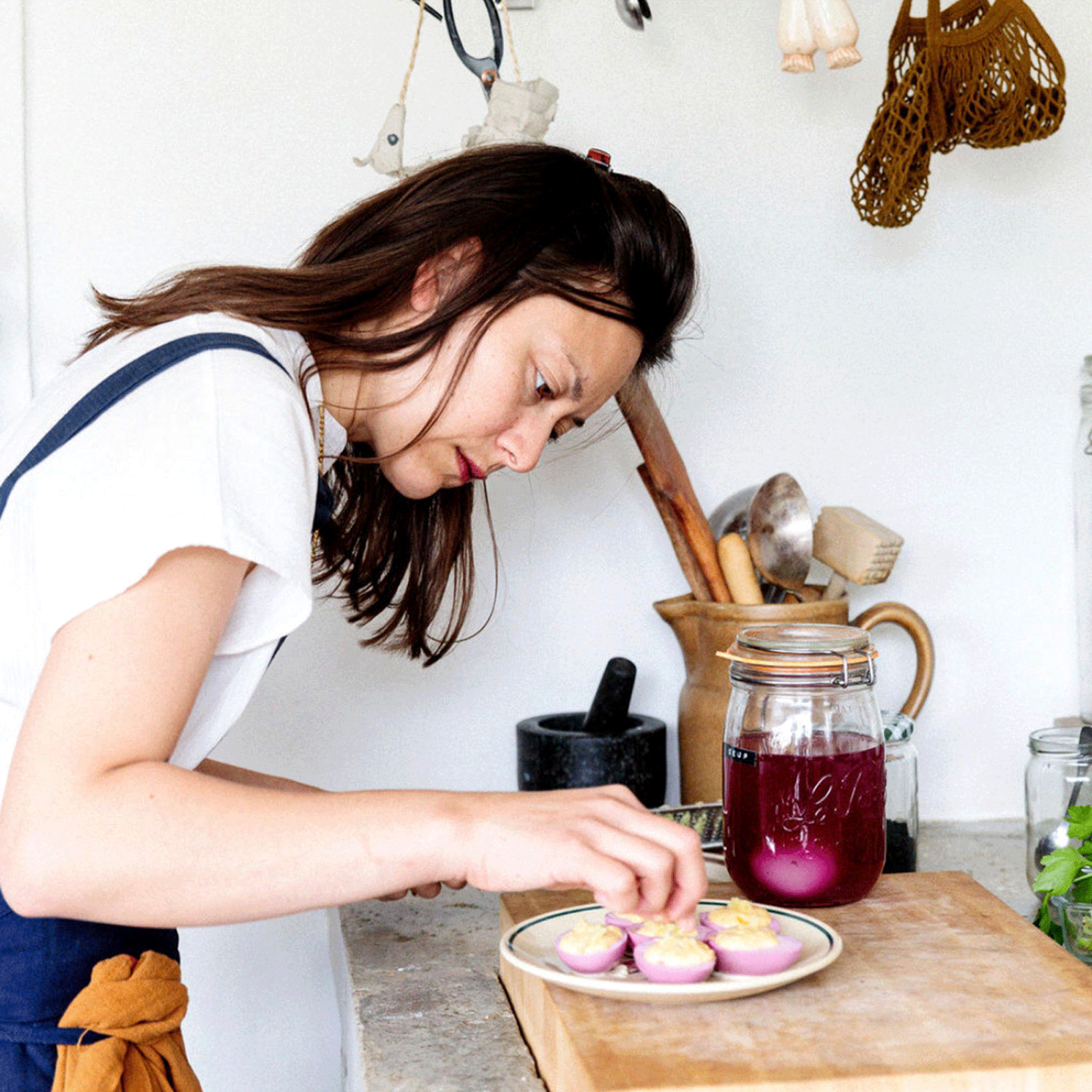
Interview with Malika Nguon, a passionate cook
Today, let’s dive into the captivating world of nomadic cooking and Franco-Cambodian flavours with Malika Nguon, a passionate cook. From her CAP in cooking to her recent return to Cambodia, discover the inspiring journey of a culinary artist who skilfully blends Asian traditions with French dishes, while exploring the rich spices of La Plantation. Let yourself be carried away by this unique encounter that celebrates the diversity of flavours and authenticity of our farm.
Can you tell us about your work and your background?
M.N. I passed my CAP (vocational training certificate) in cooking at the age of 27. I always loved eating before I learned to cook! You have to have a sweet tooth to love cooking!
Once I had my baccalaureate, I wanted to travel, to find out where I wanted to go and experience new things. In fact, I spent 3 months in Cambodia to explore this part of myself.
After a few experiences in restaurants, when I came back to France I wanted to train as a cook. When I started out, I was interested in fine dining before I discovered that I wanted to do my own cooking, mixing Asian flavours with French dishes.
I grew up with a Cambodian father, who loved cooking and eating the flavours of his country as well as those from elsewhere.
Today I’m a nomadic cook, putting my knives and jars down wherever I can. I plunged into the fascinating world of fermentation a few years ago, and this ancestral method of preservation brings me closer to my Khmer origins.
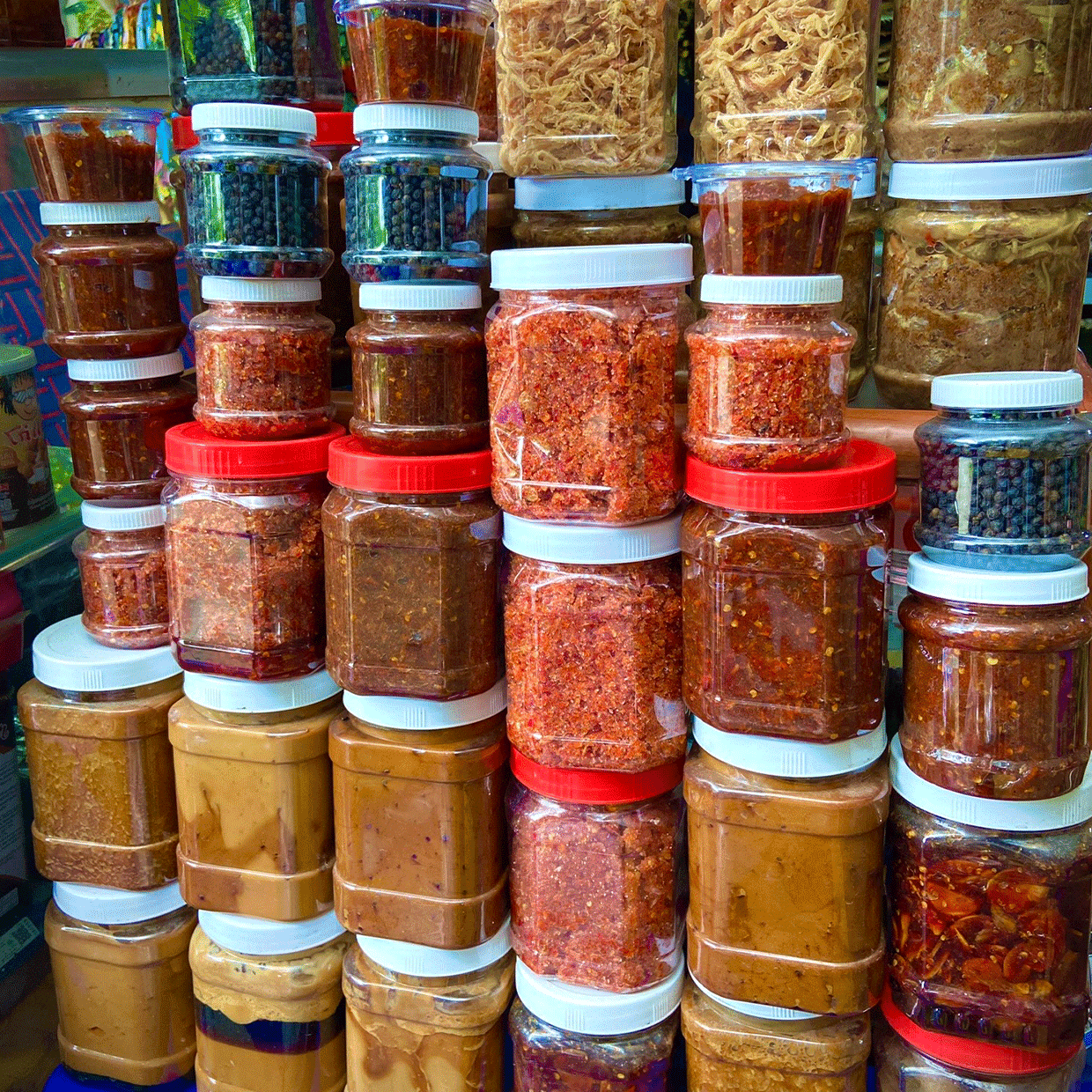
What is your relationship with Cambodia?
M.N. It’s very intimate and personal. I’m kone kat, a mixed French-Cambodian child.
I was born to a Cambodian father and a French mother and I grew up in France. Even though I went back home for the first time in my twenties, I’ve always felt close to my Khmer origins.
Ever since I was a little girl, I’ve wanted and needed to get to know the little kingdom. I feel very connected to this part of myself.
When I hear Khmer spoken, I feel good, it’s like a musicality that echoes within me, a reassuring place.
Can you tell us about your intimate connection with Cambodian flavours ? What is your Proust’s madeleine in connection with Cambodia?
M.N. The flavours of Cambodia come first and foremost through rice. Its aromatic smell, the ceremonial act of rinsing it in several baths and its perfect cooking in a pressure cooker.
I never tire of eating rice as part of my daily routine, even several times a day.
I grew up with a taste of Asia because Dad was the one who cooked at home, and even when he made French dishes he always added a touch of spice!
It was inspiring to watch Dad being so creative and gourmet, he had these instinctive and natural gestures in the kitchen.
Asian dishes rocked my childhood, they comfort me whenever I need them, they delight me and nourish me.
I have several Proust’s madeleines, notably beef kebabs with lemongrass, the smell of caramelised, smoked and marinated meat was part of my childhood, as was the image of my Dad turning the wooden spikes on the barbecue.
We’d nibble them until there was nothing left, lick our fingers of them and the wooden picks would end up in an empty plastic bottle.
We’d even eat them full, with a piece of baguette with sriracha or just like that.
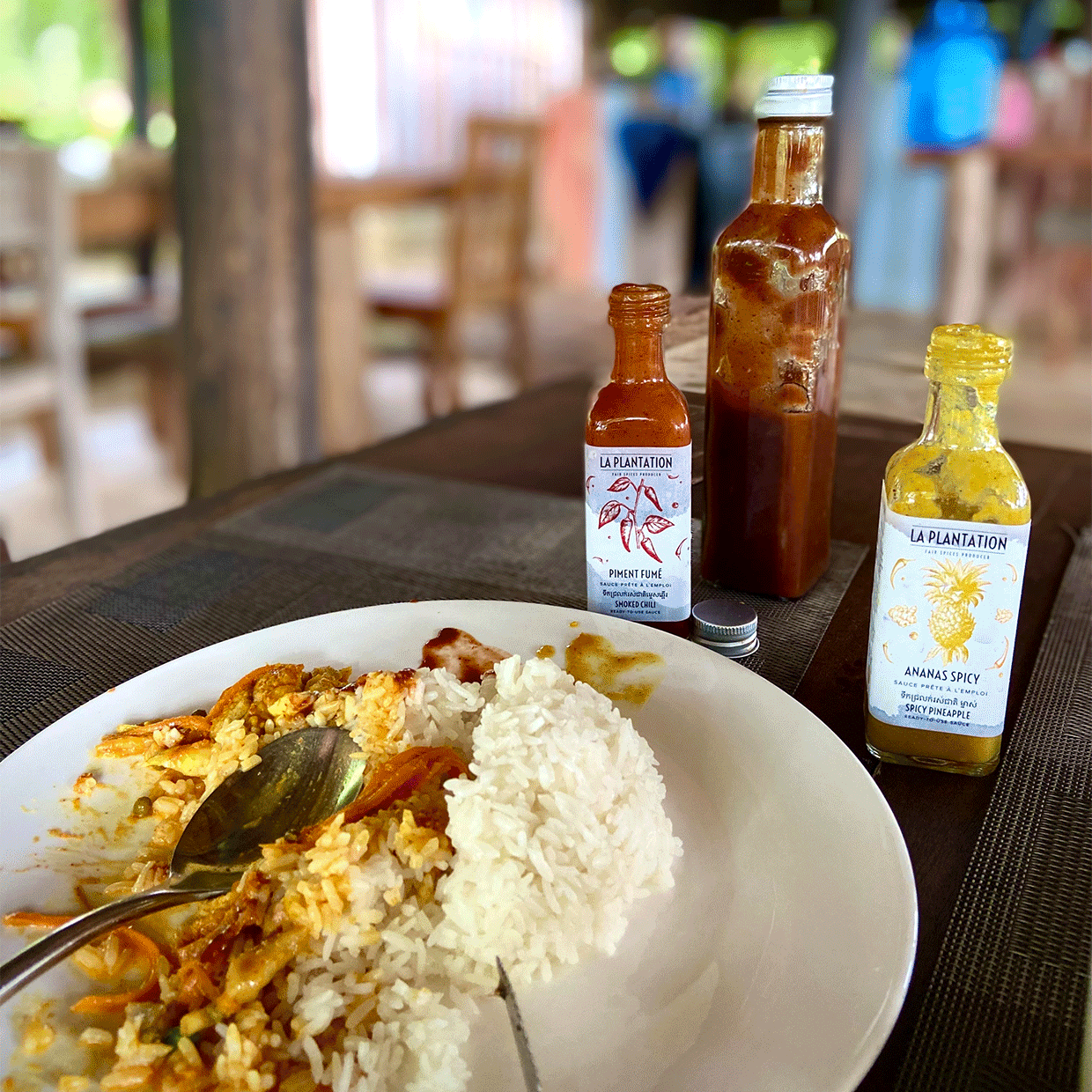
Can you tell us about your recent visit to Cambodia?
M.N. I came back to Cambodia after 10 years. This time with my children and my husband. It was an appointment I’d been looking forward to for a long time: taking them to meet their maternal grandfather Lokta’s country of origin.
It was magical and emotionally charged. It was a trip that turned me upside down. I felt at home, and myself, as I do every time I go there.
I come back here with my heart both here and there. How can I build a bridge, a link between these two cultures that make me the person I am?
How do you bring the two together and stop feeling divided?
How did you find out about La Plantation?
M.N. From Paris, I knew about La Plantation spices via social networks and I had the opportunity to taste the La Plantation spices collab with the misos of my friend Hugo from My Fermentation.
However, I discovered your social project once I was in Cambodia.
I left with a bag full of spices, thinking I’d just bring back some pepper from elsewhere. Since then I’ve been ordering them regularly, giving them to friends and family, and sprinkling them everywhere in my daily life!
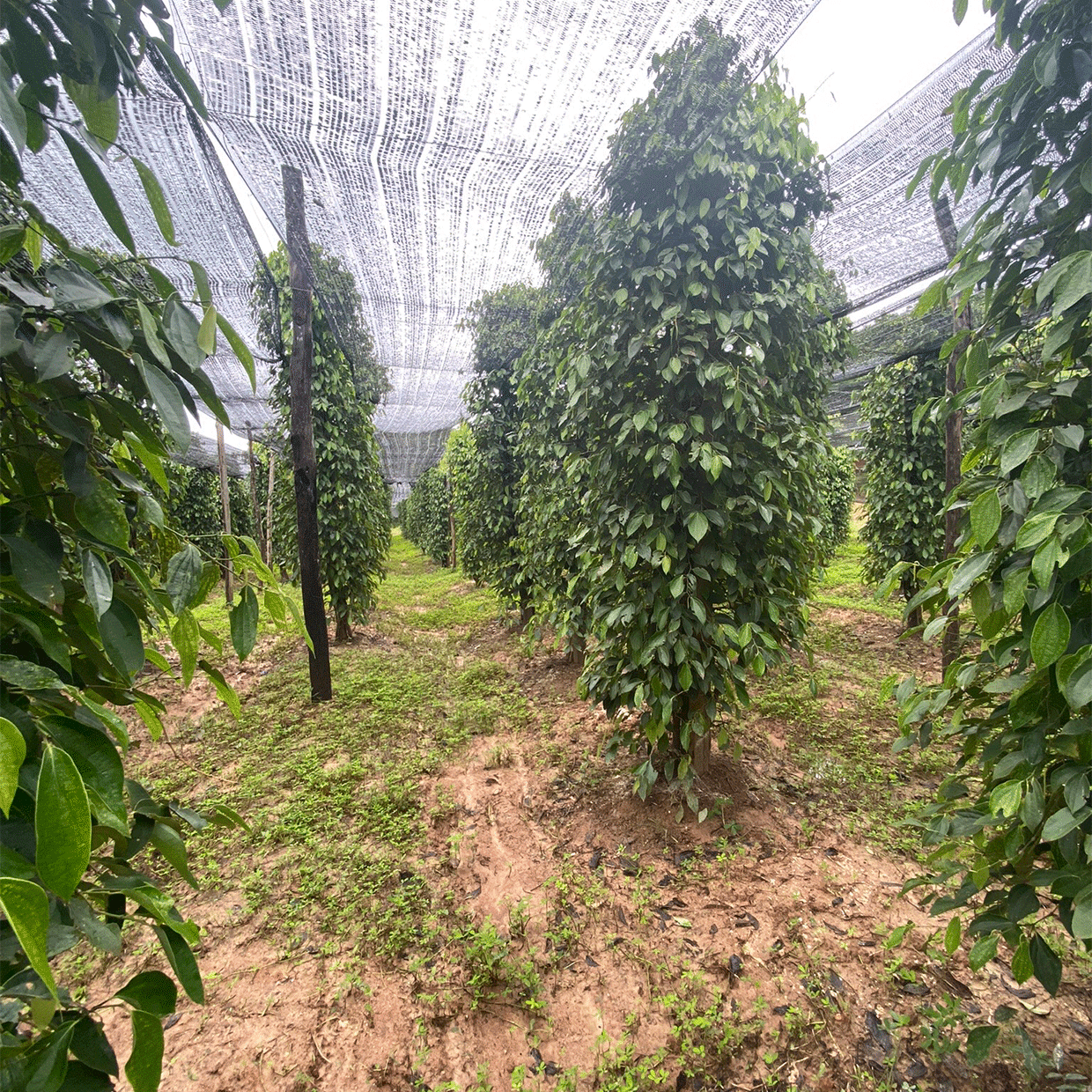
What did you think of your visit to La Plantation, Kampot? Did it inspire you?
M.N. I felt a great sense of pride among the vines! To think that they almost disappeared.
This pepper has the taste of Cambodia: its subtlety, its delicacy, its character, its depth. Its flavour is a true reflection of its terroir and its history.
I was delighted that the tour was in French, so my 9-year-old son could follow everything, ask questions and taste everything! Pepper is a passion for him!
La Plantation’s ecological and social commitments are inspiring. In a country that has suffered so much and that I find is sometimes ‘robbed’ of its traditions, I found it reassuring to see that French people like Nathalie and Guy had the will to preserve know-how and the well-being of the locals.
How do you like to use spices?
M.N. Spices are a part of me. I sprinkle them absolutely everywhere: from morning to night.
In my oatmeal porridge for breakfast, a little powdered Ginger, Cinnamon and green Mango. At lunchtime, on my kimchi rice, I add just-crushed Fresh Salted Kampot Pepper and in the evening, in a mushroom bourguignon, I toss in a wild Cardamom seed. Not to mention all the sauces we put on our plates: Ketchup, Khmer Roots, hot sauces!
How do you combine spices and fermentation?
M.N. I love adding pepper to kosos, these raw fermented fruit syrups. My favourite: cherry tomatoes with salt and pepper!
I always add spices to my lacto-fermentations: fresh ginger, Green Kampot Pepper and Wild Cardamom.
In fact, everywhere I use spices, they’re part of my history, my tastes, my DNA. I can’t imagine my life or my cooking without this exoticism that is part of me.
What’s more, my children are also drawn to spices.
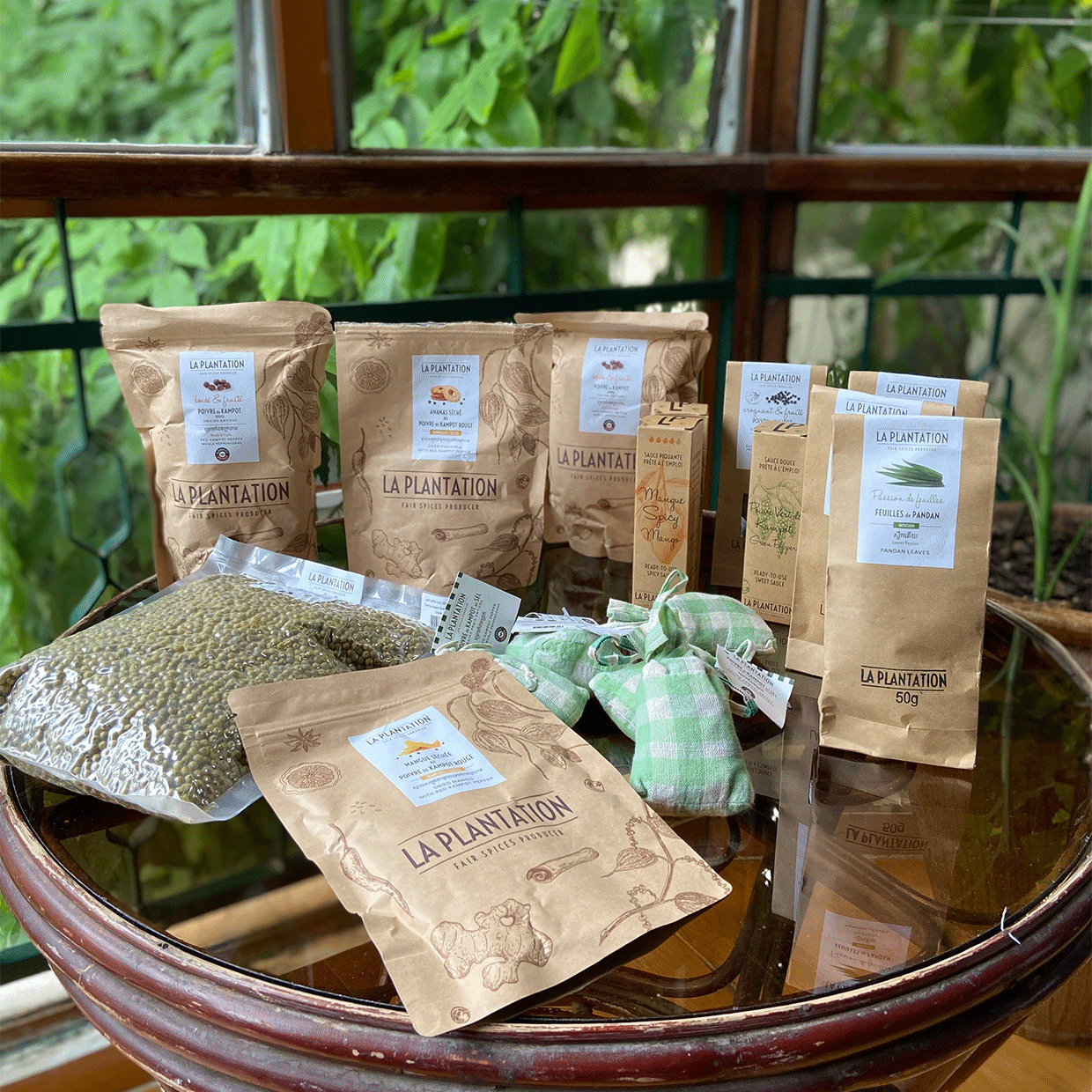
What are your favourite spices for winter?
M.N. The ones that warm the body and the heart: Cinnamon, Ginger, Kampot Pepper, Turmeric, Cardamom. I love cooking stews in winter and spices go perfectly with these comforting dishes!
What are the next La Plantation spices you’d like to discover? How would you use them?
M.N. Oh I loved discovering the taste of Long Pepper Leather!
I can imagine it crumbled into a crumble with miso chocolate mousse and fresh shiso leaves. Or on a poached quince with ginger kombucha.
Long pepper leather infused in a pumpkin and orange peel fizz. Or in sourdough crackers and leather, served with fermented beetroot caviar!
In short, this leather inspires me.
Thank you for following our gustatory journey in the company of Malika Nguon. Through her emotionally charged stories, we explored her intimate connection to Cambodia, her olfactory memories of childhood, and her commitment to ethical cooking. The visit to La Plantation in Kampot was a proudly shared experience, highlighting the importance of preserving the traditions and well-being of local communities. By incorporating La Plantation’s spices into her daily cooking and her original creations, Malika embodies the harmonious marriage between authenticity, passion and ethics.
Keep following our blog for more inspiring stories and culinary adventures, because at La Plantation, every grain of spice tells a story, and every story enriches our table. Here’s to your health and your taste buds!
Photo Credit: Jennifer Sath
